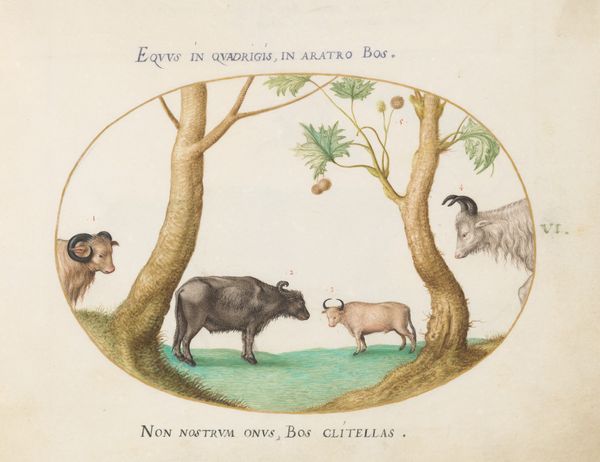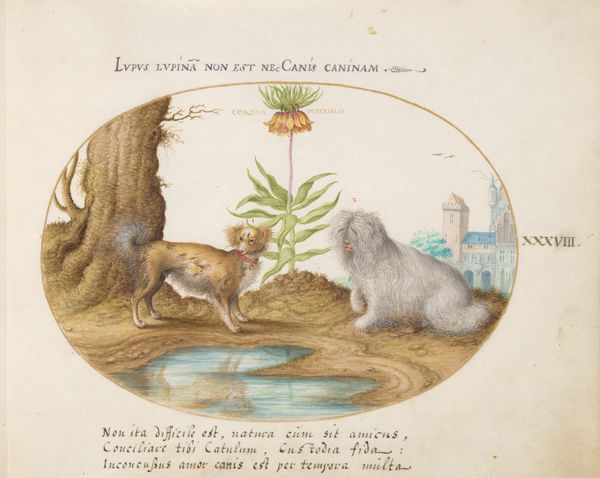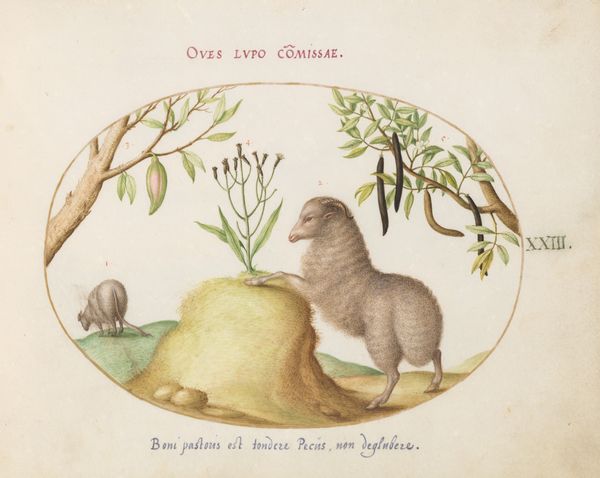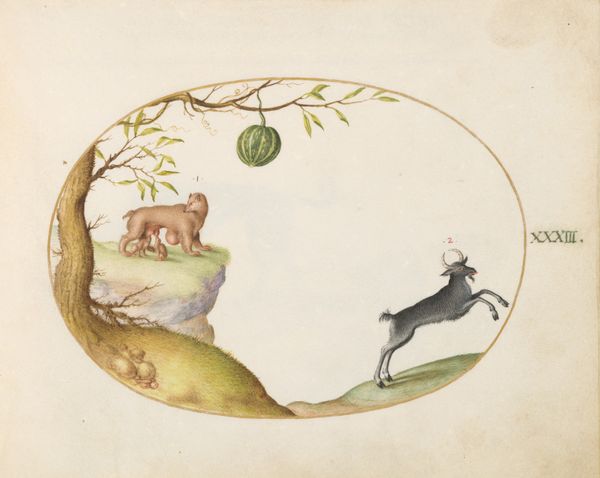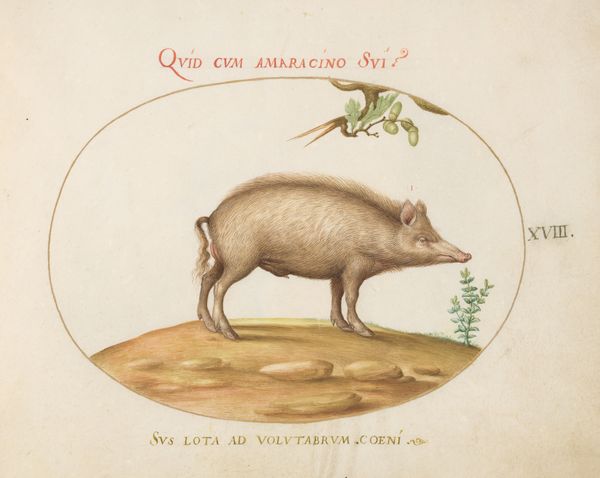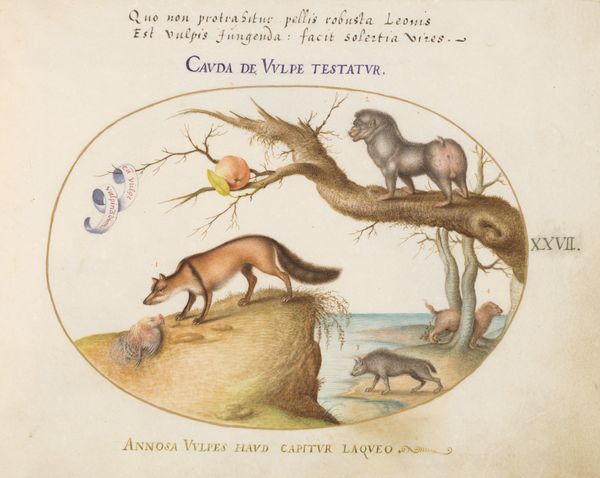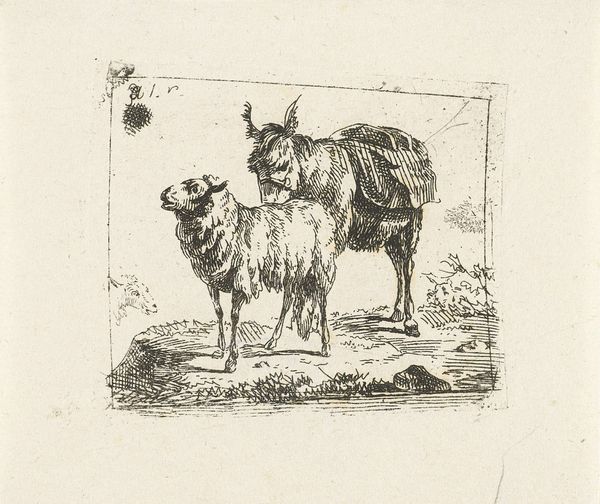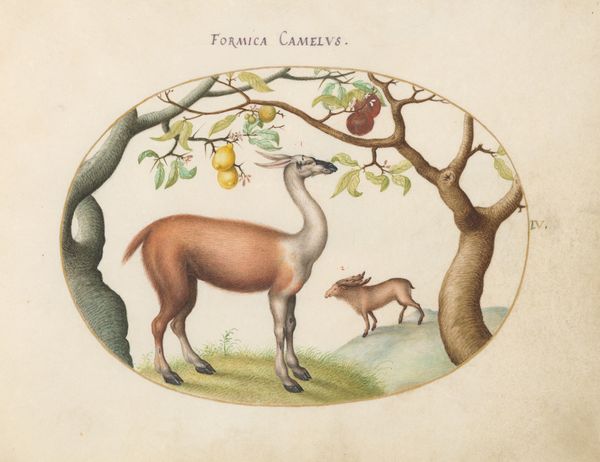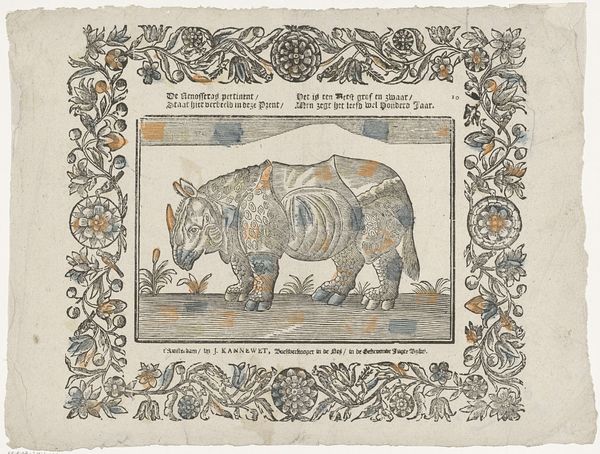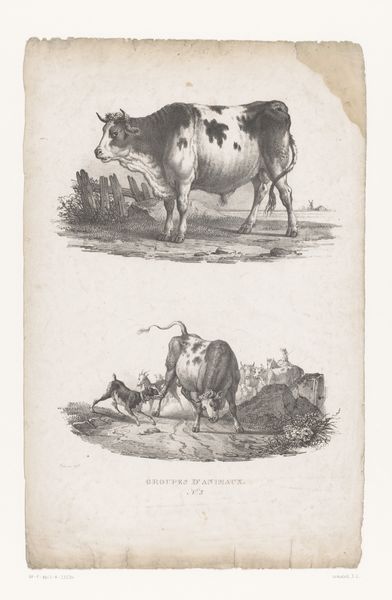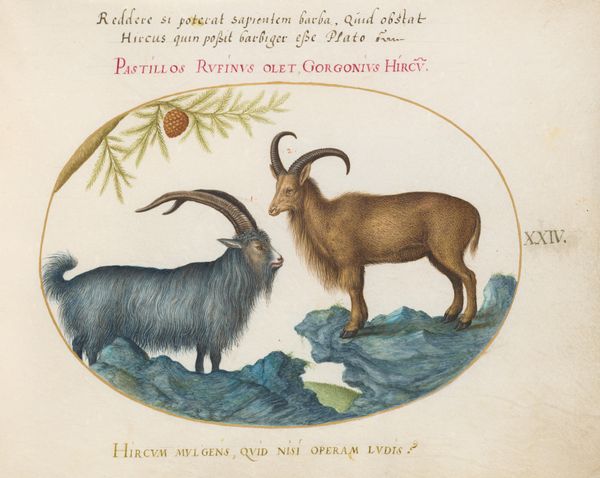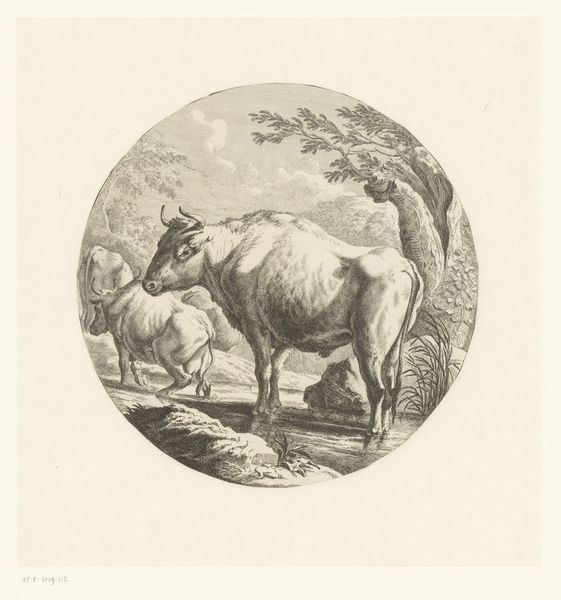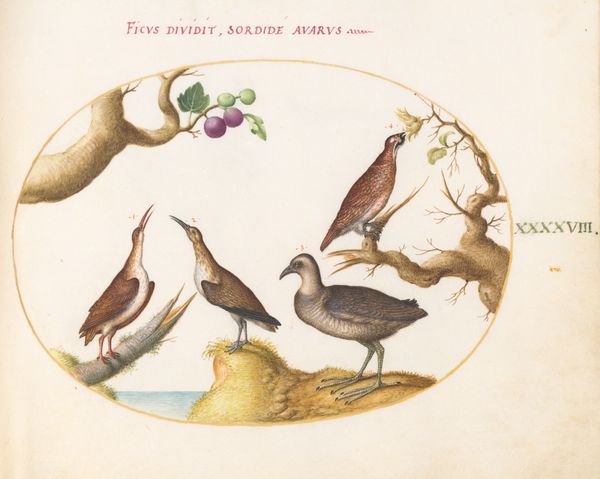
Plate 22: Blackhead Persian Sheep and a Sheep with a Long Tail, with a Cactus c. 1575 - 1580
0:00
0:00
drawing, coloured-pencil, watercolor
#
drawing
#
coloured-pencil
#
water colours
#
animal
#
landscape
#
11_renaissance
#
watercolor
#
pencil drawing
#
coloured pencil
#
genre-painting
#
miniature
Dimensions: page size (approximate): 14.3 x 18.4 cm (5 5/8 x 7 1/4 in.)
Copyright: National Gallery of Art: CC0 1.0
Curator: This engaging drawing, executed in watercolor and colored pencil, is entitled “Plate 22: Blackhead Persian Sheep and a Sheep with a Long Tail, with a Cactus." It was created around 1575-1580 by Joris Hoefnagel. What strikes you first about it? Editor: The immediate impression is one of curiosity and mild bewilderment. The composition feels unusual – a strangely regal black-headed sheep paired with that... cactus. It has a very fable-like atmosphere. Curator: Absolutely, the cactus, with its numbered details, certainly adds an element of the exotic, doesn't it? This work, you see, comes from a time of immense global exchange. The presence of what appears to be an Opuntia cactus is fascinating—these were being introduced to Europe at this very time, becoming potent symbols of global exploration and collection. Editor: So it’s not just a random plant; it signifies the expanding worldview of the period. And what of the sheep? I notice the inscription above it. "Hic niger est, hunc tu Romane caveto” – "This one is black, Roman, beware of him.” Are we to understand it as some moral allegory? Curator: Quite possibly! Animals in art of this period often functioned as symbolic carriers of virtues and vices. Black was, of course, heavily loaded as a color and attribute. While precise meanings are elusive, the stark black head might connote something to be wary of, perhaps associated with foreignness. But the entire context – the sheep's gentle posture, its presentation alongside the numbered cactus – feels deliberately enigmatic. Editor: It's interesting how Hoefnagel uses the miniature format. Encircling the scene almost like placing it under a looking glass or lens invites close examination and allows the viewer to imagine these specimens anew. Does this intimate presentation impact our reading of the image? Curator: The miniature scale compels intimacy, certainly, and also plays with the idea of knowledge itself. We are invited to analyze and categorize this contained world. It mirrors, on a small scale, the much larger European project of inventorying and claiming the wider world. The numbering system emphasizes empirical observation. Editor: That certainly puts the strangeness I felt earlier into context. It is an artifact of its time. An era where wonder, scientific observation, and symbolic language intertwined. Curator: Precisely. Hoefnagel presents a microcosm of that era’s fascinations and anxieties.
Comments
No comments
Be the first to comment and join the conversation on the ultimate creative platform.
